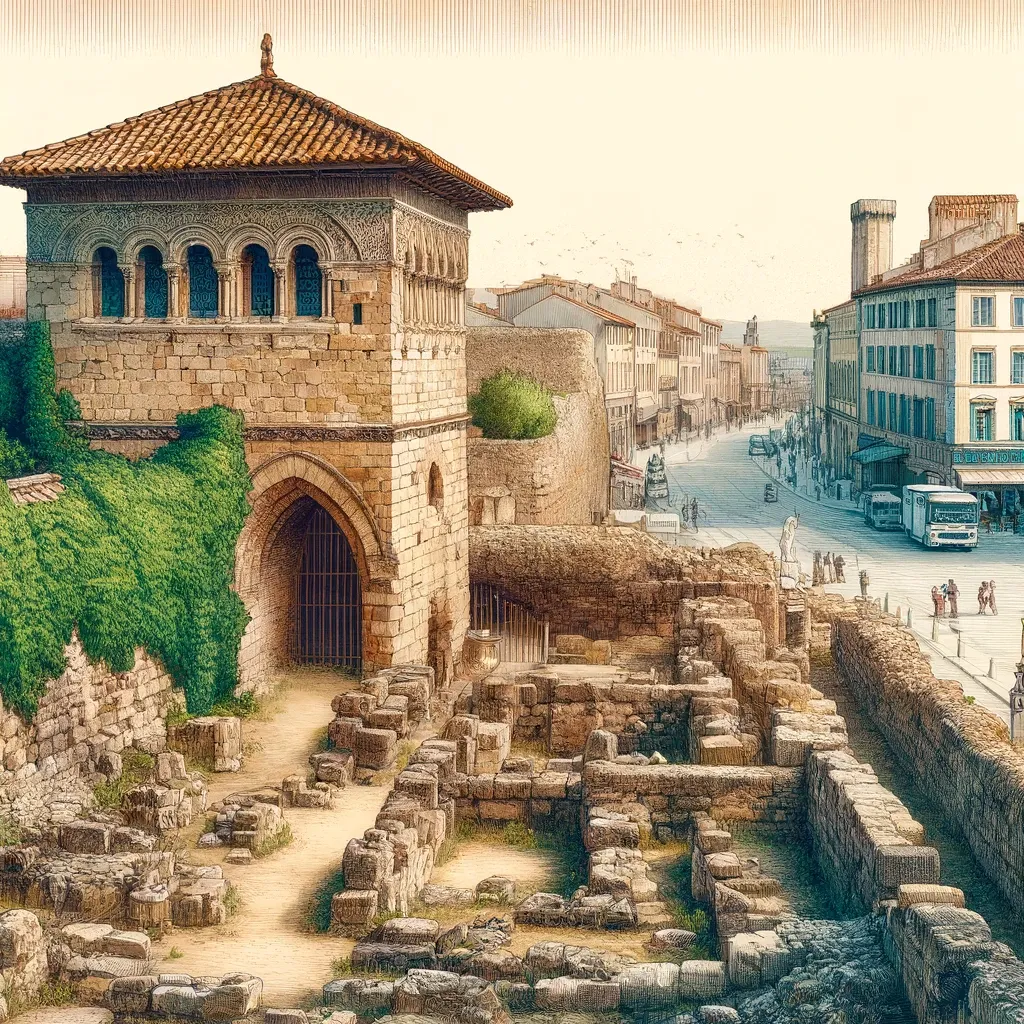Roman wall and tower discovered in Narbonne - History Blog

An archaeological survey was conducted on the site of a residential complex in the historic center of Narbonne, southern France, which led to the discovery of the remains of a Roman wall and a tower from the early imperial period.
Preliminary estimates are based on measurements and construction style, dating them to the last decades of the 1st century BC. This discovery was unexpected, as it marks the first time probable signs of defensive walls have been found in the ancient city of Narbo Martius, which was the first Roman colony outside of Italy.
The study revealed a section of wall measuring 100 feet long. This is a boundary wall connected to a round stone tower. The tower was built in an unusual style: the base of the round tower is integrated into a square foundation. This was likely done to provide additional stability to the massive walls.
The colony of Narbo Martius was founded by Gnaeus Domitius Ahenobarbus in 118 BC, two years after he and Quintus Fabius Maximus Allobrogicus defeated the Arverni and Allobroges and conquered all of southern Gaul. As proconsul of Gaul, Gnaeus Domitius was the first to build a Roman road in Gaul, the Via Domitia, which stretched from Spain to Italy through his new colony. He then constructed a second Roman road in Gaul, the Via Aquitania, which ran from Narbo through the province of Aquitania to the Atlantic Ocean. At that time, the city was also located at the mouth of the River Ode, positioned at a strategic crossroads for trade, agriculture, travel, andRome's military expansion.
Marcus Tullius Cicero, in his speech in defense of Marcus Fonteius, the former praetor of Gallia Narbonensis, who was accused by the Gallic tribes of financially exploiting the province for their own benefit, describes Narbo Martius as "a civic colony, serving as a watchtower and protection for the Roman people, as well as a barrier against these tribes." Cicero delivered his speech in 69 BC, and after that, the significance of Narbo only grew. Julius Caesar restored it in 46-45 BC as a colony for veterans of his Tenth Legion, and then Augustus made it the capital of the province of Gallia Narbonensis in 22 BC.
The Narbonne area, currently under archaeological investigation, is located on the outskirts of the ancient city.



These discoveries are related to the urban port of Narbo Martius, located on the ancient branch of the River Ode. Together with the external maritime port, the remains of which have been found in several locations (Saint-Martin Island in Gruissan, Mandirac, La Notik), this forms a complex port system, the significance of which is confirmed by texts and ancient inscriptions. This research contributes to the determination of the ancient river route, part of which was artificially altered during the Robine canalization in the 18th century. The structures that are usually buried or, unfortunately, destroyed during the resumption of construction on the site are so significant that developers have decided to incorporate these findings into their new construction concept.
Comment
Popular Posts
Popular Offers

Subscribe to the newsletter from Hatamatata.com!
Subscribe to the newsletter from Hatamatata.com!
I agree to the processing of personal data and confidentiality rules of Hatamatata











